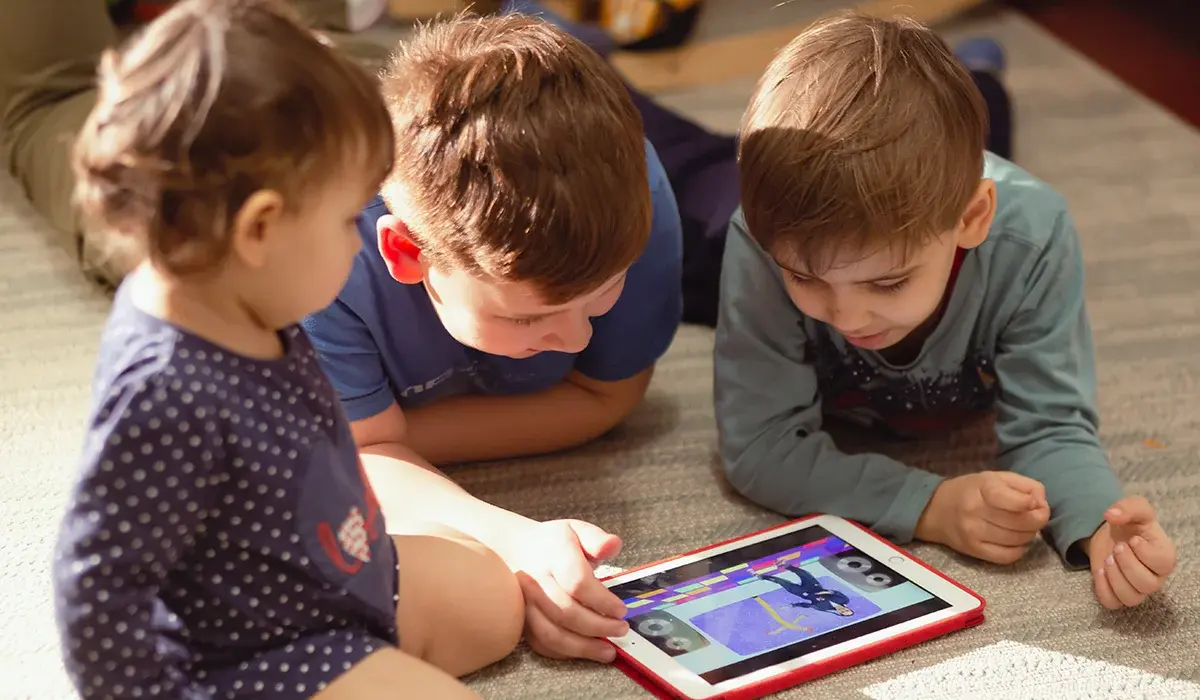Studies
Kids Swap TV for This Popular Screen Activity

Kids Replace TV Screens: A New Era of Digital Childhood
In today’s tech-driven world, children interact with devices from infancy. Tablets, smartphones, and consoles shape their daily routines rapidly.
Kids no longer rely solely on television for entertainment. Instead, short-form content and interactive apps dominate their screen media experiences today.
The Evolution of Screen Time in Early Childhood
Recent data from Common Sense Media highlights critical shifts in media use among kids aged 0 to 8. Usage remains at 2.5 hours daily.
However, researchers found major changes in how that time is spent. Kids Replace TV Screens by opting for gaming and short videos instead.
In 2024, children watched fewer television shows compared to 2020. Instead, they increased daily gaming by 65%, from 23 to 38 minutes.
Dr. Supreet Mann noted that nearly half of kids have watched short-form videos on TikTok or Reels. That number continues to grow.
These new trends offer opportunities for learning but also pose risks regarding content exposure and lack of supervision.
From Passive Viewing to Interactive Engagement
Experts stress that the shift to new media types requires thoughtful guidance. Parents should consider context, not just screen time duration.
Dr. Mann emphasizes promoting beneficial digital experiences over simply restricting time. Kids Replace TV Screens in pursuit of interaction and stimulation.
Device ownership starts early. Forty percent of 2-year-olds own tablets. Nearly a quarter of 8-year-olds already have smartphones.
AI is also emerging. 39% of kids aged 5 to 8 use AI tools for schoolwork, marking a dramatic digital shift in childhood.
How These Trends Compare With AAP Guidelines
The American Academy of Pediatrics (AAP) offers screen time guidelines to help families ensure healthy media use.
For children under 18 months, AAP advises avoiding screens entirely, except for video chatting with family members or caregivers.
Parents introducing media to toddlers should co-view and select only high-quality, age-appropriate programming with active engagement.
The report found most families exceed these guidelines. Children under 2 average one hour daily, while ages 2 to 4 average two.
Surprisingly, only 17% of parents co-view content on TikTok, compared to 62% who co-watch YouTube videos with their children regularly.
This inconsistency leaves gaps in media understanding and raises concern about exposure to inappropriate content.
Establishing Healthy Media Habits
According to Dr. Don Grant, setting firm screen limits and co-viewing encourages safer, smarter digital habits for young children.
Parents must prioritize offline routines such as sleep, physical activity, and social interaction over screen time use.
Kids Replace TV Screens in ways that sometimes reduce physical play and affect emotional regulation, especially during transitions like bedtime.
Overuse of screens may interfere with sleep, contribute to obesity, and hinder cognitive and social-emotional development in growing children.
Health and Developmental Impacts of Excessive Screen Time
Dr. Carla Counts Allan highlights links between high screen use and developmental delays in language, focus, and emotional regulation.
Children exposed to screens excessively may struggle with frustration tolerance, attention span, and self-soothing abilities.
Sleep disruption is another major concern, as screen time can impact both mental and physical wellness.
Screen-based habits can also affect eye health, contributing to rising rates of nearsightedness or myopia among young children.
How Parents Can Support Healthy Digital Use
Dr. Mann and Dr. Allan suggest proactive steps to create a safe media environment and reduce harm from digital exposure.
Set parental controls and use age filters. Also, explain those settings to kids in age-appropriate, understandable language.
Always research the apps and games your children use. Ensure the content aligns with your family’s values and safety standards.
Avoid screens for children under 18 months. Choose educational, interactive programs for older toddlers and preschoolers.
Parents should co-view with kids. Talking about content encourages understanding and turns screen time into learning experiences.
Avoid screens during mealtime, wake-up time, and bedtime. These routines are essential for developing self-regulation and internal cues.
Balance media use with active play and social interaction. Encourage outdoor time and creative activities that stimulate development.
Model responsible media behavior. Establish phone-free zones and limit your own screen time to set a strong example.
Disable autoplay features to prevent endless scrolling and offer greater control over children’s digital consumption.
Finally, consider the long-term impact of introducing screens. Once a child uses a device, it becomes part of their world.
Be mindful of when and how you introduce new technology. Evaluate its value and potential drawbacks for your family dynamics.
Navigating the Digital Future Together
Today’s families face unique challenges as digital media becomes a central force in early childhood. Kids Replace TV Screens with content that demands more parental involvement.
From toddlerhood to grade school, every child’s media journey looks different. By applying expert guidance and intentional practices, parents can stay ahead.
Explore more updates on children, parenting, and technology by visiting this website today.












